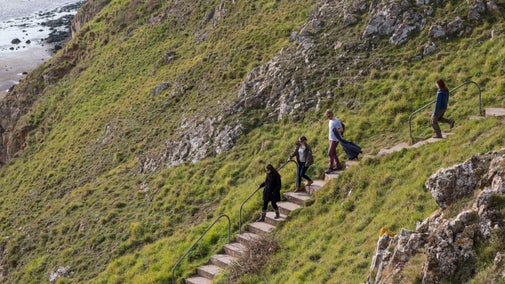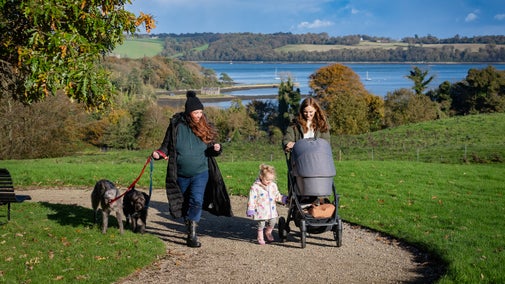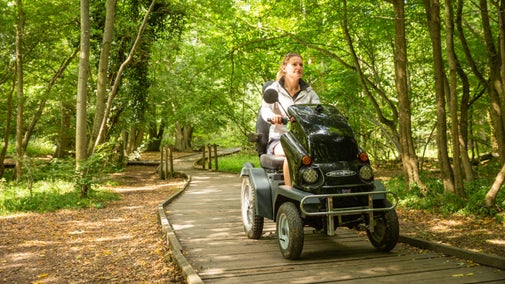Monument meander at Wellington
Somerset
Take a walk to the monument through a beech-lined avenue that opens out onto a wildlife rich meadow. This is an ideal place to fly your kite or stop for far-reaching views. Stop to take in the world's tallest three-sided obelisk, a tribute to the 'Iron Duke', before descending into the depths of Firs Plantation.
Near to
Wellington MonumentStart point
Wellington Monument car park, grid ref: ST143167Trail information
Come prepared
This walk covers uneven ground with some exposed tree roots. Walking boots are recommended.
More near here
Woodland Hill circular walk
A short walk through mixed woodland and nearby heathland that is a haven for native wildlife and has evidence of early human settlement.

Staple Plain walk
This wildlife-rich walk takes you through woodland, up Beacon Hill and back through lowland heathland. After taking in views across the Quantock Hills, look out for red deer, skylark and Dartford warbler.

Drove Road, Great and Marrow Hills walk
A 3.5-mile walk around some of the quiet and scenic parts of Somerset's Quantock Hills, taking in ancient trackways used by humans for centuries.

Get in touch
Our partners

We’ve partnered with Cotswold Outdoor to help everyone make the most of their time outdoors in the places we care for.
You might also be interested in
Walking
Explore some of the finest landscapes in our care on coastal paths, accessible trails, woodland walks and everything in between. Find the best places to walk near you.

Walking in Somerset
From the majestic crags of Cheddar Gorge and the sea views at Bossington to gentle strolls through Tudor parkland at Montacute House, these are some of the best walks in Somerset.

Cotswold Outdoor: our exclusive walking partner
Learn about the National Trust’s ongoing partnership with Cotswold Outdoor. Find out how they help us care for precious places and the exclusive discount available for National Trust supporters.

Staying safe at National Trust places
The special places in National Trust care sometimes come with a few risks for visitors, be it coastline or countryside. Find out how to keep safe throughout your visits.

Follow the Countryside Code
Help to look after National Trust places by observing a few simple guidelines during your visit and following the Countryside Code.

Family-friendly walks
Take a family-friendly walk along these trails suitable for pushchairs and children. On the way, you can go wild in natural play areas and compete in woodland den building.

Ancient tree walks
Walk amongst ancient woodlands in our care. You can find centuries-old oak, sweet chestnut, yew and cherry trees on our trails around the UK.

Things to see and do at Wellington Monument
On your visit to Wellington Monument, learn about its history, go on one of the great walks, take a tour of the monument or simply enjoy all the wildlife this little corner of Somerset has to offer.



